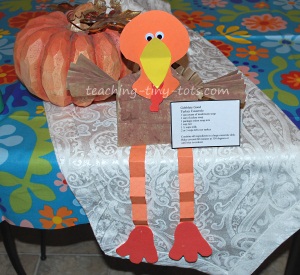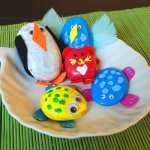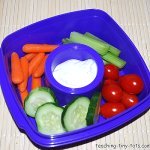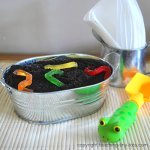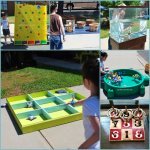Thanksgiving Tabletop Turkey
Description
Toddler Activities: Make a tabletop turkey as a centerpiece. Great for a class activity too...send each child home with his or her own tabletop turkey and a recipe for turkey leftovers.
Materials
2 Brown paper lunch bags
Brown Tempera Paint
Sponge
Construction Paper: orange, yellow, red or foam
1 cup rice
1 sandwich bag with tie or small ziplock
Wiggly eyes
Holepunch
Stapler (Adult use only)
Yarn
Scissors
Pencil
Craft glue (Bonds quicker)
Free Printable Pattern and Recipe for the Tabletop Turkey
Steps
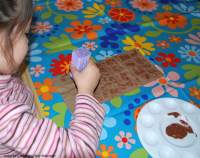
- Sponge paint all sides of the first brown paper lunch bag except the bottom.(Body and Wings) Sponge paint one side of the second brown paper lunch bag. (Tail)
- Let dry completely.
- Cut the top half of the first lunch bag. The bottom half is the body.
- Cut the removed section into two equal pieces.
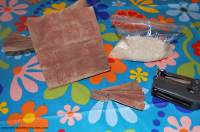
- Accordion fold each half and fold up one inch at the bottom of each fan and staple. These are the wings.
- Glue or staple one on each side of the body in the fold of the lunch bag.
- Fill plastic bag or ziplock with one cup of rice. Tie or press to close and put into the body of the turkey.
- Gather the top or fold corners inward. Staple shut with the bag of rice inside.
- Trace all body parts onto the colored construction paper or foam and cut out.
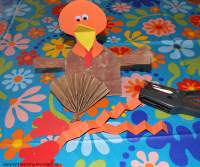
- Glue beak onto the head. Make a wattle from the scrap red if desired. Draw or glue on wiggly eyes.
- Accordion fold two strips of orange construction paper approximately 3/4 inch by 12 inches for the legs. Glue the feet onto the legs.
- Glue the legs under the body
- Cut second paper bag and accordion fold to make the tail. Fold up at an angle and staple. Glue under the bag and at the base of the folded fan. This will require craft glue to adhere faster and easier.
- Cut out recipe and glue onto construction. Add a message if desired. Punch a hole and tie with ribbon around the turkey's neck.
Tips and Suggestions
- Make accordion folds a little larger if it is a young toddler. Let them help press it flat if they are unable to fold on their own.
- For this toddler activity, an adult may need to do all the attaching of the legs and wings. Stapling the wings on may be easier if you do not have craft glue. Or use a clothespin to hold wings until it dries.
Turkey Facts
- The turkey is one of the most famous birds in North America. In fact, Benjamin Franklin wanted to make the wild turkey, not the Bald Eagle, the national bird of the United States
- The wild turkey we often see in photos or pictures is not the same as the domestic turkey that we serve at Thanksgiving.
- Domestic or tame turkeys weigh twice what a wild turkey does and are raised on farms.
- Most domestic turkeys are so heavy they are unable to fly. Wild turkeys, however, can fly for short distances at speeds up to 55 miles per hour. They can also reach speeds of 25 miles per hour on the ground.
- Turkeys have great hearing, but no external ears. They can also see in color, and have excellent visual acuity and a wide field of vision, which makes sneaking up on them difficult.
- Turkeys have a poor sense of smell, but an excellent sense of taste.
- After the female turkey mates, she prepares a nest under a bush in the woods and lays her tan and speckled brown eggs. She incubates as many as 18 eggs at a time. It takes about a month for the chicks to hatch.
